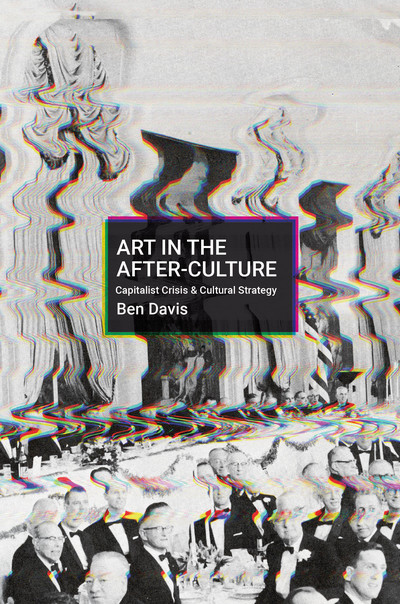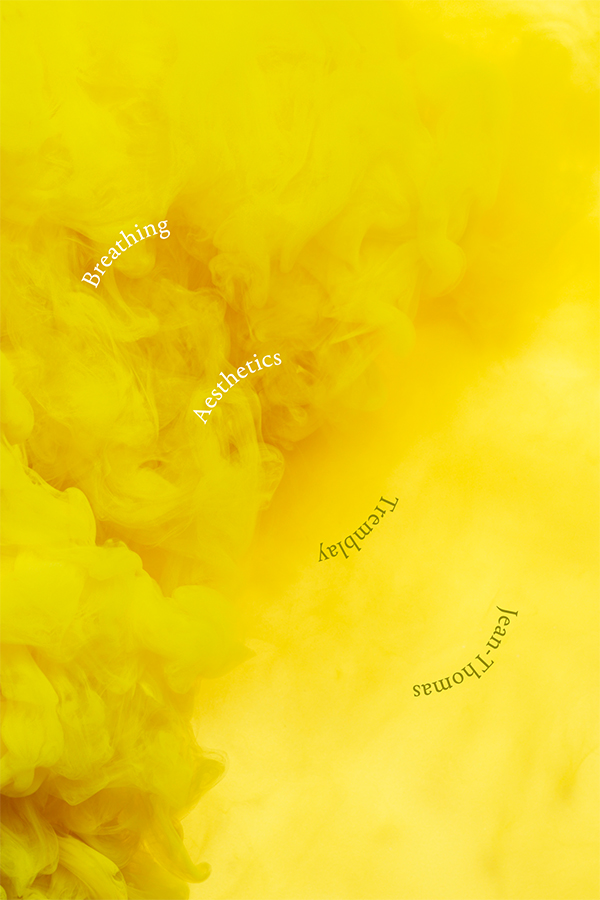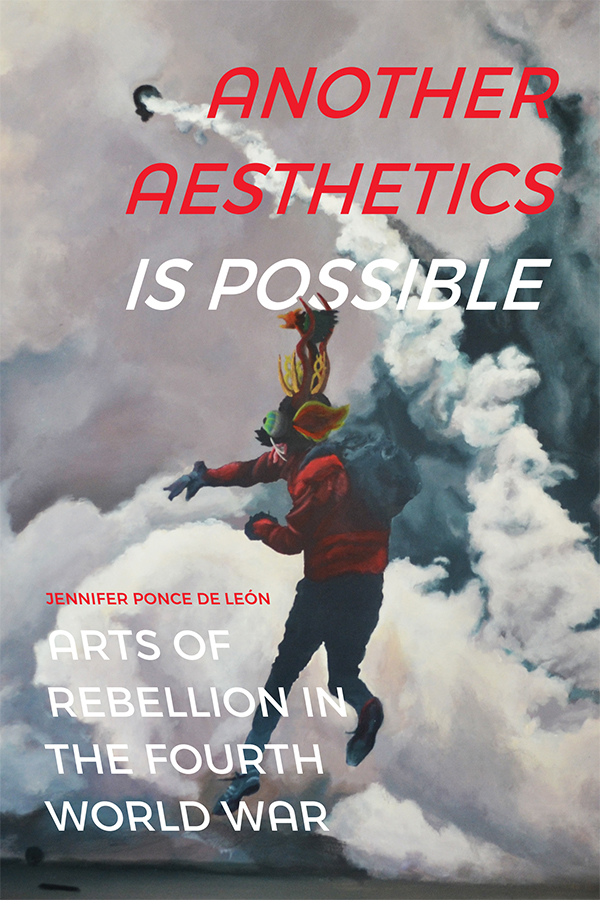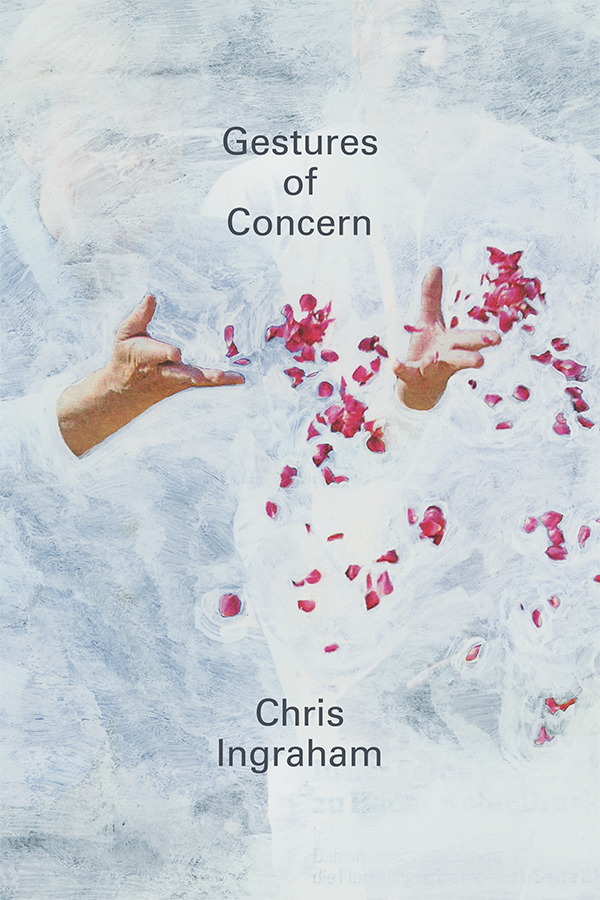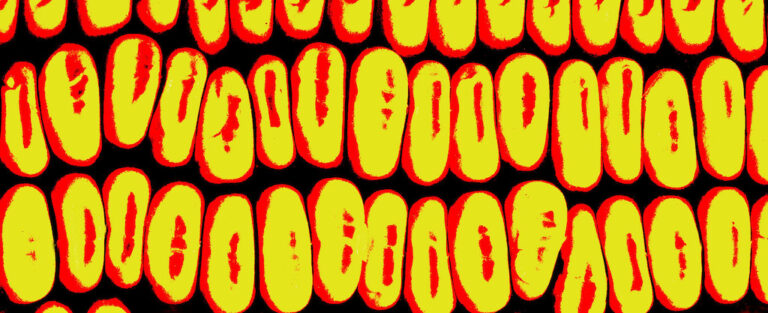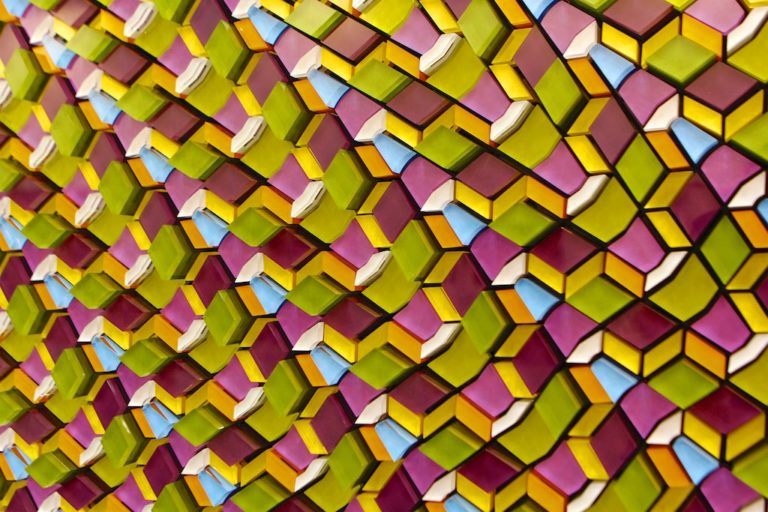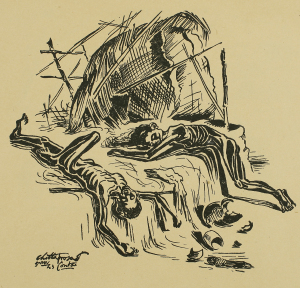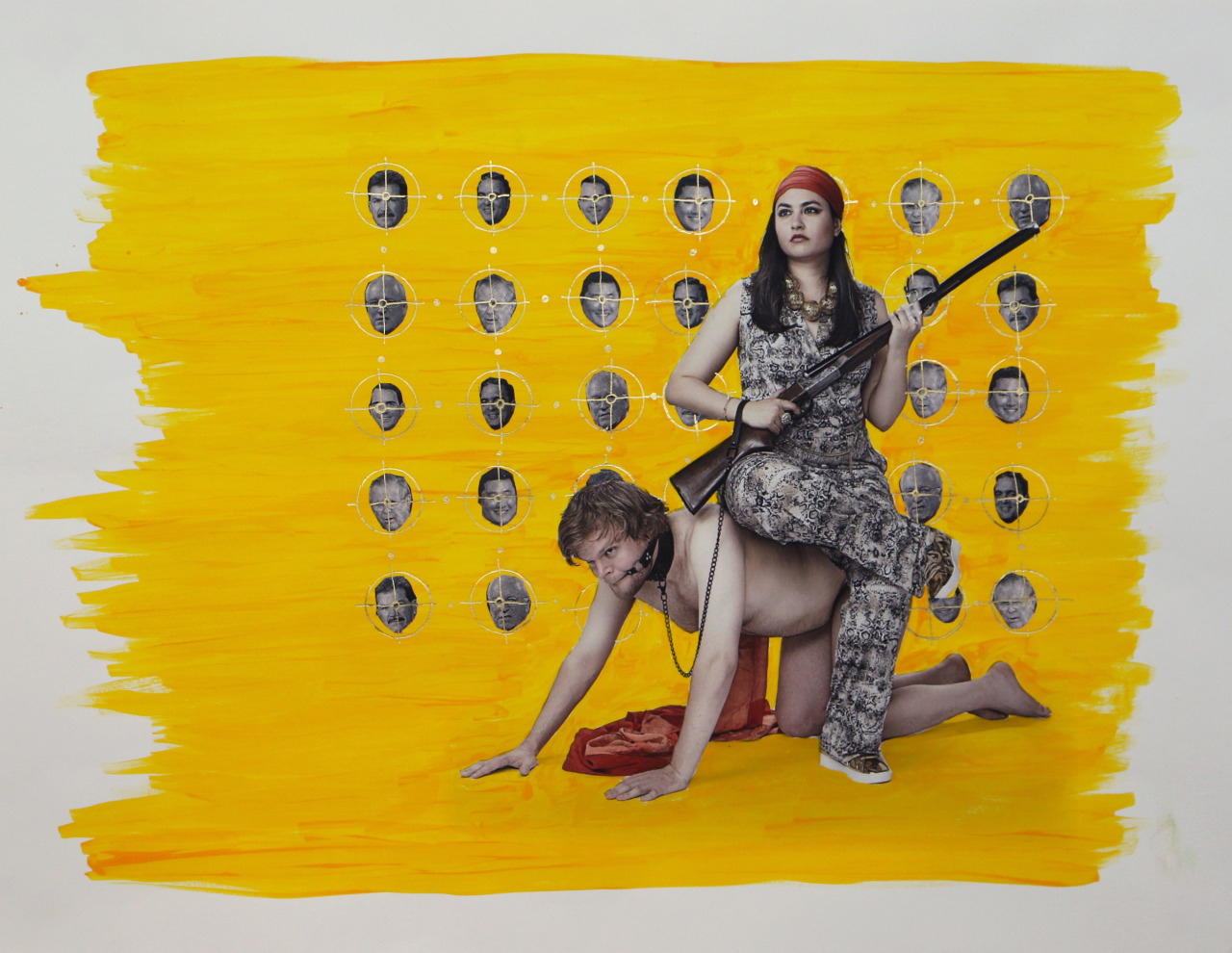In Black Gathering: Art, Ecology, Ungiven Life, Sarah-Jane Cervenak engages with the ecoaesthetic, ecopoetic, and ecoliterary work of Black artists and writers who, through their engagement with the environment, imagine the earth and Black life outside the logics of governance, property and ownership. Guided by two primary concepts, Cervenak considers “Gathering” and “Ungiven” as crucial frameworks to think otherwise about Black sociality, togetherness, and gathering aesthetically. By attending to the creative and artistic practices of Toni Morrison, Nikki Wallschlaeger, Samiya Bashir, Gabrielle Ralambo-Rajerison, Gayl Jones, and Leonardo Drew, Cervenak underlines “gathering” as both an act of resistance to the enclosures of anti-blackness and an insistent practice of “deregulated togetherness.”
Keyword: aesthetics
Cringe Theory
Cringe theory is a framework intended to make sense of cringe as a cultural and political phenomenon that has come to condition how disability is understood in the contemporary American public imagination. Informed by Silvan Tompkins’ approach to affect, cringe theory has two distinct modalities. First, it can be understood as a suprastructure of feeling, a reflex tethered to our affective anatomy, which regulates the relationships between and among our emotions. This modality of cringe theory operates internally, telling us when to cringe, and each of us has our own, even if they do often resemble one another. The second of cringe theory’s modalities comes into view as an analytic that traces cringe from the moment of its emergence through the ripple of its repercussions. As an analytic, cringe theory helps us to understand how cringing operates as a culturally conditioned response to the world and as evidence of our affective relations to normative power. By examining both the internal and analytic forms of cringe theory, I show that cringing is a deeply political experience, one that indexes affect as an internalized system of governance by which we come to feel with normativity. Disability is a perfect object for this kind of affective governance, given how often it is used to signify the porous boundary between the purely aesthetic and the resolutely political. By examining a series of recent, popular representations of disability that attempt to elicit cringing from the audience, I argue that we are increasingly encouraged to know disability through our felt or affective perceptions of it. Cringe theory reveals one route through which these affective perceptions are engendered, alongside the affective norms that condition how we are all feeling our way through life.
Review of Art in the After-Culture: Capitalist Crisis & Cultural Strategy by Ben Davis (Haymarket Books)
The eight essays in Ben Davis’ Art in the After-Culture are centered on the interchanges between cultural production and economic development in contemporary society. Largely told through the lens of leftist aesthetic theory, the book pushes against exploitative notions of capitalist systems and ambitions towards decentralization. Davis likens art to a “survival kit” and advocates for creative practitioners to strategically influence the direction of society.
Review of Breathing Aesthetics by Jean-Thomas Tremblay (Duke University Press)
Jean-Thomas Tremblay’s Breathing Aesthetics draws our attention to how respiration as a cultural analytic maps the uneven distribution of risk in our contemporary moment. Intervening at the intersection of queer theory and the environmental humanities, Tremblay deciphers an archive of cultural texts that range from CAConrad’s ritualized poetry to Ana Mendieta’s elemental performance art and Toni Cade Bambara’s novel The Salt Eaters. In so doing, they reveal an understanding of how breath registers precarity across race, gender, and disability, while also serving as a mechanism for healing and care. This discerning analysis, combined with a focus on the exchange between body and milieu, makes a case for respiration as a distinctly ecological and embodied relation. Ultimately, Breathing Aesthetics provides crucial insight into how aesthetic expressions of respiratory variations evidence a tension between morbidity and vitality within bodies whose ability to breathe is most endangered.
Review of The Aesthetics of Excess: The Art and Politics of Black and Latina Embodiment by Jillian Hernandez (Duke University Press)
The Aesthetics of Excess by Jillian Hernandez is a dazzling and provocative book that deploys the aesthetic as a category to grasp with great care the lives and representations of Black and Latina women whose performance of gender exceeds the white middle class norms of feminine comportment.
Review of Another Aesthetics is Possible: Arts of Rebellion in the Fourth World War by Jennifer Ponce de León (Duke University Press)
In Another Aesthetics is Possible, Jennifer Ponce de León looks at recent aesthetic practices in Argentina, Mexico, and the United States that shift the commonsense of history, space, and violence in order to usher in an anticapitalist and anticolonial world. With an expansive archive and a method that combines interviews, journalism, and close formal readings of art–activist practices, Ponce de León demonstrates the importance of aesthetics—and of aesthetic criticism—for making another world possible.
Review of Gestures of Concern by Chris Ingraham (Duke University Press)
Chris Ingraham’s Gestures of Concern considers how affective communities can be built by and through concerned gestures. His analysis of the political power of a range of these gestures—from the small tokens of get-well cards to the political protests against shuttered public resources such as libraries—emphasizes their affect as much as their action. Ingraham pays attention to the background of concerned gestures that are political, aesthetic, and community-based, and his analysis of their efficacy and their impact draws readers to consider different kinds of critical resistance in the face of growing social disparities.
Review of Art as Revolt: Thinking Politics Through Immanent Aesthetics, edited by David Fancy and Hans Skott-Myhre (McGill-Queen’s University Press)
The entanglements of “the aesthetic” and the political-economic have long been addressed in the areas of philosophy, cultural studies, and media theory. In this edited volume, David Fancy and Hans Skott-Myhre have assembled a collection of essays aimed at examining a range of aesthetic approaches to political projects untethered to “capitalist assumptions,” while looking toward the possibilities of “post-capitalist futures.” Through their respective contributions, the authors offer their readers ways to envision the potential for running lines of flight away from capital’s apparatuses of capture by engaging in creative practice.
Review of Insurgent Aesthetics: Security and the Queer Life of the Forever War by Ronak K. Kapadia (Duke University Press)
Ronak K. Kapadia’s deeply conversant and well researched Insurgent Aesthetics: Security and the Queer Life of the Forever War brings queer, affect-oriented methodologies to bear on an analysis of Arab, Muslim, and South Asian diasporic art. It is these communities after all, Kapadia points out, who undergo increased scrutiny in the United States and Europe after September 11, 2001. According to the author, these diasporic artists engage in an insurgent aesthetic “against empire’s built sensorium,” which is a visual cultural practice that offers an alternative embodied critique of “US empire’s perverse logics of carcerality, security, and war” (10).
Review of The Composition of Movements to Come: Aesthetics and Cultural Labor After the Avant-Garde by Stevphen Shukaitis (Rowman & Littlefield International)
Stevphen Shukaitis has produced an interesting text by situating a strategic conversation between artistic avant-gardes and autonomist political movements. He begins with a plea for rethinking strategy, and not just questions of tactics, in seeking radical aesthetic and socio-political change.
Disruptions—An interview with Jacques Rancière
This interview concerns the premise of ‘aesthetics’, as a certain regime of identification, which intervenes within the domain of ‘politics’ and ‘history of art’, as configured in the ideations of Jacques Rancière. From this general premise the discussion provokes us to particularly re-configure the concept of ‘modernism’ in art that is not solely defined through simplistic comparisons with ‘post-modernism’. Instead, a re-configuration of ‘modernism’ lets us reconsider the ‘Avant Garde’ project from the methodology of an ‘aesthetic community’ formulated during the French revolution existing still in the texts of the young Marx of the 1840s. The logic of representations in art moves beyond the objective structures of ‘Dialectical Reason’, and instead gets aligned to the aesthetic logic of being spatio-temporally ‘surplus’. Furthermore, it is the aesthetic logic that introduces the heterogeneity of political symbolizations that underlines a multiplicity of process as against a distinct strategy linking theory and practice thus even challenging a global rationality of defining ‘what is art?’ (Art History) and ‘what is politics?’ (Politics). It is based upon these contingent reversals of the signification of the world, of trying to identify the singular points of disruptions connecting to or not connecting to make a whole, that the interview concludes with questions on the multiplicity of possibles.
Neoliberal Aesthetics: 250 cm Line Tattooed on 6 Paid People
Eunsong Kim challenges existing literature on Spanish artist Santiago Sierra, articulating Sierra’s neoliberal aesthetics as part of a process of managing the imagination of finance capitalism. By situating Sierra’s performance art as a performance of terror, Kim argues that Sierra does not just collaterally reproduce capitalist power relations, but coldly and calculatedly exploits and violates the bodies of the working poor, particularly people of color, for his own profit and for the viewing pleasure of his wealthy audiences. Kim fiercely critiques the ways Sierra profits from his use of Marxist discourse and appeals to political action. In doing so, Kim challenges scholars and artists to embrace the position of laborers and take up Black Radicalism against artistic instantiations of capitalism.
In Search of Digital Feminisms: Digital Gender & Aesthetic Technology
What is it that influences girls’ choices of new technology? How is digital creativity affected by gender norms? “Digital Gender & Aesthetic Technology” aims to make visible females as creative developers of the Internet and new technology, through interviews with students, artists, project managers, and entrepreneurs. The prevailing social norms appear to be reflected on the Internet as “digital gender norms,” where girls and boys prefer apparently different communication tools. While working with the question of “digital gender,” I have developed the hypothesis of “Aesthetic Technology,” namely that girls often have an artistic approach towards technology. Girls mainly learn technology for a personal reason, planning to create something once they have learned the technique, and their goal often have aesthetic preferences. The question of girls “becoming technical,” is more complicated than one might first think, in relation to gender. Even though young girls are often just as interested in technology as young boys are, it is difficult for them to keep or adapt their technical interest to normative femininity in their teens. Another problem is that expressions of technical competence or innovation, which do not correspond to the predominant male norm, might be hard to recognize. Females who study within the field of creative digital technology often begin their career by struggling with questions of equality, instead of just practicing their profession.


